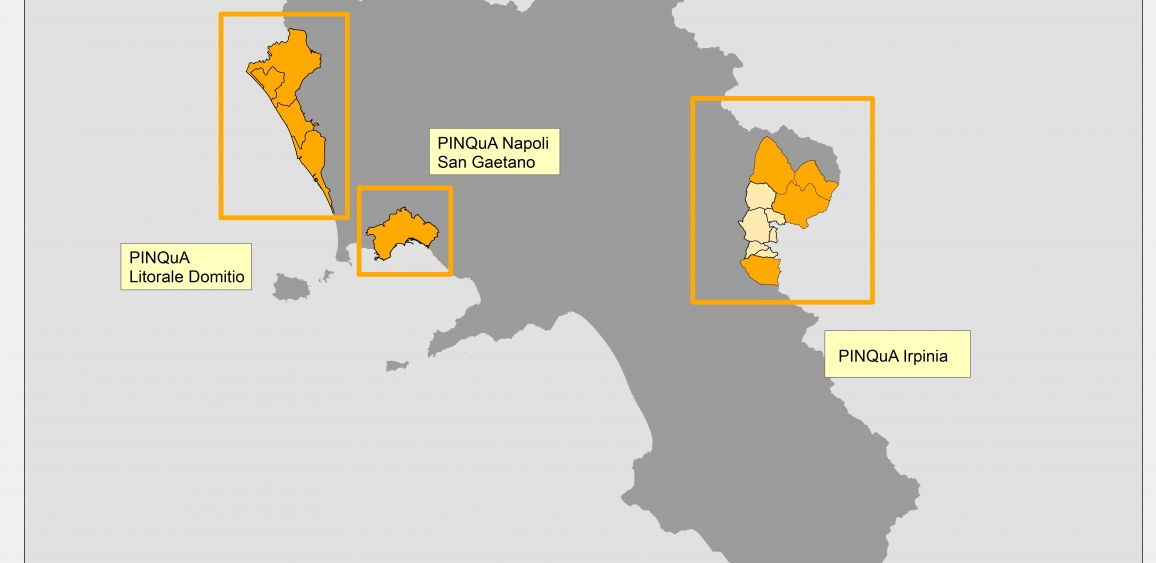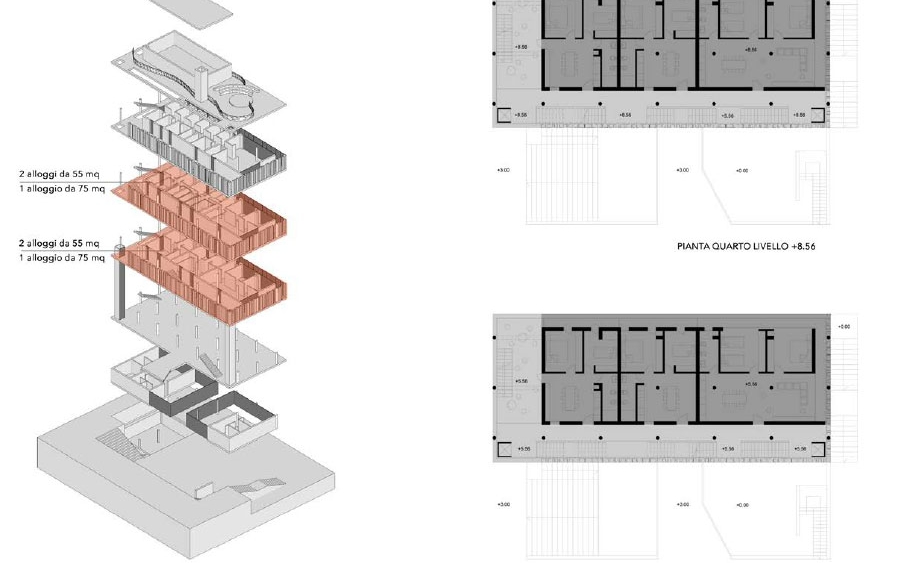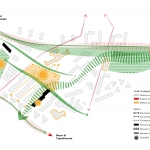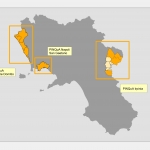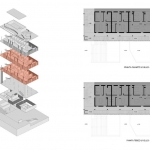The Campania Region has participated with ACER ( Agency Campania Residential Housing) in the PINQuA (National Innovative Program for the Quality of Living) with a proposal articulated on three different places of the regional territory, strategically connected but differently characterized by themes and functions. Three possible modalities and themes of contemporary social living: the dense city, the peri-urban countryside and the inland areas of Campania.
For the theme of urban density, the San Gaetano district, in the northern suburbs of Naples, has been chosen. The intervention refers to a pilot project for the redevelopment of the entire neighborhood both at the scale of buildings and at the urban scale with a progressive redesign of open spaces and an increase of public areas and equipment.
For the peri-urban area, a territorial area of the province of Caserta has been investigated on five sites located in the municipalities of Castel Volturno, Cellole, Mondragone and Sessa Aurunca. Finally, the project related to the inland of Campania, between the provinces of Avellino and Salerno, located in the municipalities of Aquilonia, Calitri and Laviano with a network of services extended to the entire area and the establishment of a “rural-metro” connection between adjacent villages and the future high-speed railway station.
Cities and territories are going through a phase of transition that is profoundly changing the way of life of the settled communities, which, however, does not correspond to similar trajectories of real transformation: disparities and inequalities are growing, new forms of poverty are spreading, especially in areas with higher urban density, conflicts between the old inhabitants and immigrants are increasing, and segregation in neighborhoods with high housing density is rising. Critical issues that make it urgent to reflect on the quality of social housing.
It is necessary to take an overall look at the territory, going beyond the regeneration of individual settlements: on the one hand, experimenting with innovative forms of housing, adaptive from the functional point of view and uses, with new services and spaces for work and leisure; on the other hand, promoting forms of territorial rebalancing, based on renewed conditions of attractiveness and accessibility of marginal areas, now marked by phenomena of underutilization, also in relation to existing public housing.
Italiano





